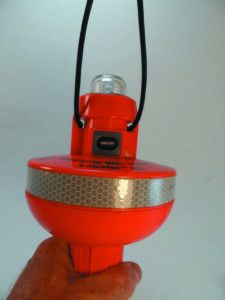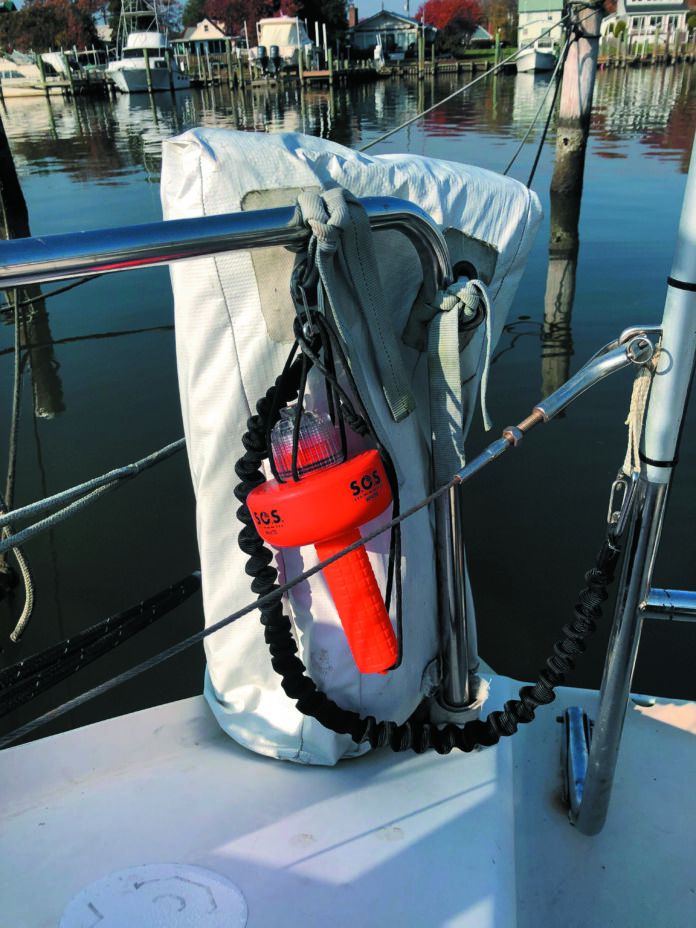In our report on the new electronic visual distress signalling devices (eVDSD) we mentioned in passing that a U.S. Coast Guard approved eVDSD might serve double duty on smaller boats as a man overboard marking device (see “Distress Flares Go Electric,” PS June 2021). Several readers posed the same question. After all, these devices float, are brighter than personal lights, and will flash all night. We generally store our Sirius C-1003 in the cabin to protect it from UV and the elements. For night sailing, however, we clip it to a horseshoe to mark a nighttime man overboard. But how well does it actually work in this application?
First, a quick refresher on eVDSDs. In late 2018, the USCG announced the acceptance of a new signaling device standard, RTCM Standard 13200.0. The new beacons flash SOS in alternating colors (red/orange and cyan). While flashing white lights are used for many things, including marking fishing nets, studies showed that the alternating color pattern was far more detectable and recognizable as a distress signal. Devices meeting the RTCM standard automatically meet the existing USCG electronic distress signal standard.

Any high intensity light flashing 50- 70 times per minute is recognized as a distress signal. However, a flashing anchor light does not technically meet the USCG carriage requirements for a night distress signal, since a distress light must have its own dedicated battery source.
To test UV resistance and watertight integrity, we left our Orion 357 hanging in the weather all season, just to see what happened. Not a thing. No apparent weathering, no damage to the lens or switch, and it works just fine.
We’re not suggesting that you keep your electronic flare on the rail yearround. That would likely shorten its life. But they are quite weather resistant and we’re pretty sure they can survive being stored on the rail during passages and for a few months while cruising, now and then. They make a good supplement to the ubiquitous horseshoe.
One note: If you are thinking of hand-holding an electronic flare for some reason, for example in the water in waves or in a dinghy, do not wave it side to side. Hold it steady and level. Visibility is reduced or negligible when out of plumb. Find a fixed, vertical mounting.





































